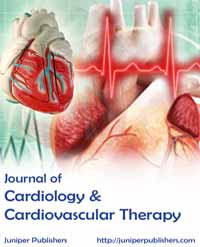JUNIPER PUBLISHERS-OPEN ACCESS JOURNAL OF CARDIOLOGY & CARDIOVASCULAR THERAPY Abstract Targeted temperature management (TTM) is a standard of care following cardiac arrest, but the therapy is often underutilized. Workflow interruptions and adverse events associated with existing TTM devices contribute to under utilization, which has prompted the development of new technologies. The purpose of this article is to summarize the rationale behind evaluating a new TTM device, the Esophageal Cooling Device (ECD). Keywords: Targeted temperature management; Therapeutic hypothermia; Post cardiac arrest; Emergency room; Innovation adoption; Resuscitation protocols Introduction Targeted temperature management (TTM) has become a standard of care following cardiac arrest [1,2] and the benefits of this therapy are well established [3,4]. However, not all patients who should receive this therapy do. Studies have documented TTM under utilization at the hospital level [5,...







